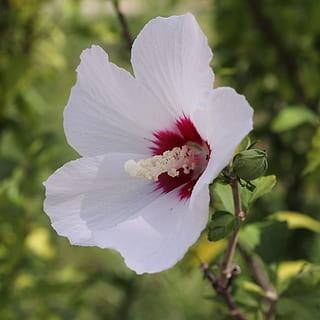
rose of Sharon
Hibiscus syriacus 'Antong Two' LIL' KIM
Cycle:
Perennial
Watering:
Average
Hardiness Zone:
5 - 8
Flowers:
Flowers
Sun:
Full sun,part shade
Leaf:
Yes
Growth Rate:
Low
Maintenance:
Low
Drought Tolerant:
Yes
Care Level:
Medium
watering
Rose of Sharon (Hibiscus syriacus 'Antong Two' LIL' KIM) should be watered regularly and abundantly during its first few weeks after planting. After that, water it only when the top inch or so of the soil has dried out. It is best to water your Rose of Sharon at the base of the plant and try to avoid wetting the foliage as much as possible. During the summer months, Rose of Sharon should be watered every 3 to 4 days, while in the spring and fall, every 5 to 7 days should suffice. In cooler climates, you may not need to water this species at all during the winter months. Be sure to observe the plant closely during the summer months, as hot and dry weather can cause water to evaporate quickly and cause the soil to dry out more quickly as well.
sunlight
Rose of Sharon prefers full sunlight and at least 8 hours of direct sun per day. Planting in an area with partial shade and a sunny spot should help the plant thrive. During the summer months, the Rose of Sharon should receive full sunlight all day, but during the winter months, the direct sun should be reduced to a few hours. Rose of Sharon will also benefit from indirect sunlight, which can be found by placing the plant in an area with filtered sunlight from a nearby wall or tree.
pruning
To ensure optimal growth and bloom of your Rose of Sharon (Hibiscus syriacus 'Antong Two' LIL' KIM), it is recommended to prune twice a year: once in early spring before new growth emerges, and then again in late summer after flowering. For the first pruning, cut back each stem to about 1-third of its length. Removing dead flowers and empty stems should also be done at this time. For the late summer pruning, you will want to cut back each stem to about 1-half of its length. This should be done after the plant has finished flowering to encourage healthier new growth in the days and weeks ahead. It is also suggested to trim away any unhealthy sections throughout the plant's growing season. This will help to prevent any unwanted diseases and pest infestations.
